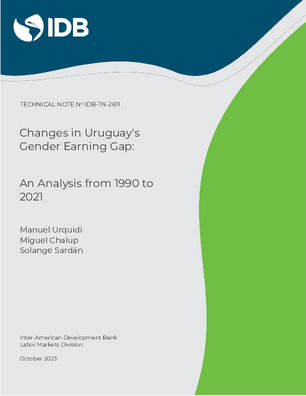Changes in Uruguay's Gender Earning Gap: An Analysis from 1990 to 2021
Date
Oct 2023
The gender earnings gap between men and women in Latin America is an obstacle to achieving gender equality and sustainable development. In Uruguay, this gap persists despite women often having a better labor profile than men, suggesting the presence of gender biases. Furthermore, the gap is more pronounced among informal sector workers, and there also is a heterogeneous earnings difference in favor of men in most occupations. To analyze the gender earnings gap in labor income in Uruguay between 1990 and 2021, this study uses the Continuous Household Surveys of the National Institute of Statistics harmonized by the Inter-American Development Bank (IDB) and presents two methodologies for estimation: the Blinder-Oaxaca decomposition and the Ñopo decomposition. This analysis spanning over two decades has revealed the existence of earnings disparities by gender and a trend towards reducing the gender earnings gap over the considered period. However, it remains over time, indicating the need for additional efforts to understand the recorded disparity. The analysis shows that while the total gap has decreased, as it has in many other countries in the region, this reduction is generally related to the explained gap (derived from individuals' endowments in education, work experience, and age) and not to a reduction in the gap that cannot be explained by these variables. This unexplained gap could be associated with gender-differentiated regulations, biases, prejudices, or discrimination that persists over time, making it an urgent task to determine the factors causing it and address them.




